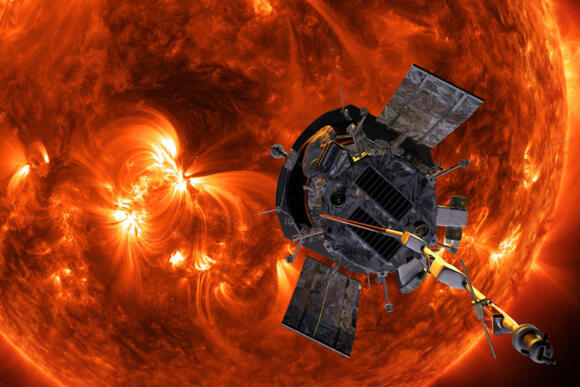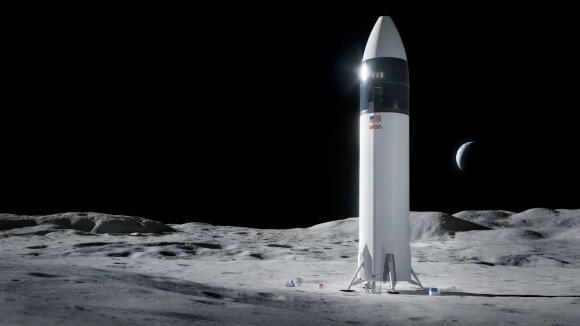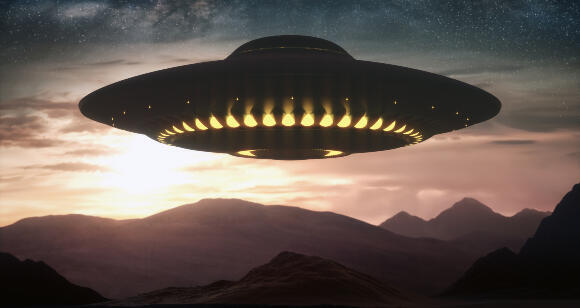Getting your Trinity Audio player ready...
Delays en route to the Moon
NASA, the United States' space agency, is expressing concern that SpaceX's Starship spacecraft, designated as the lunar lander for the Artemis program, may not be ready as scheduled. If this is the case, the program's first manned lunar landing could potentially be postponed to 2026.
Other stories:
At a joint meeting of the U.S. National Academies' Aeronautics and Space Engineering Board and its Space Studies Board, James Free, associate administrator for the Exploration Systems Development Mission Directorate at NASA, responsible for managing the systems development for NASA’s Artemis missions, suggested that the Starship might not be ready for the program's first human lunar landing, planned as part of the Artemis 3 mission for the end of 2025.
Free stressed the space agency’s concerns over the large number of launches SpaceX must complete before the spacecraft is prepared to land humans on the Moon. Each landing will necessitate not only the launch of the landing vehicle but also additional Starship spacecraft to refuel it in Earth's orbit before heading to the Moon.
Before it can be allowed to land humans, the company must demonstrate a successful unmanned Starship landing on the Moon, as well as its in-space refueling capabilities.
“December 2025 is our current manifest date, but with the difficulties that SpaceX has had, I think that's really, really concerning…They have a significant number of launches to go, and that of course, gives me concern about the December of 2025 date…, you can think about that slipping probably into '26," Free said. He did not specify the difficulties he was referring to, but it's clear he was alluding to the crash of the Starship during the first attempt to launch it into space atop a Super Heavy rocket two months ago.
The spacecraft exploded mid-air after failing to separate as planned from the launch rocket, and not all the rocket engines operated as planned. Currently, Starship is officially grounded pending the conclusion of an investigation by the U.S. Federal Aviation Administration (FAA) into safety hazards and environmental damage allegedly caused by the launch experiment.
The Artemis mission kicked off last year with the successful launch of the unmanned Orion spacecraft on an extended voyage around the Moon. Artemis 2, set to be the program's first manned flight, is slated for next year and will see astronauts orbit the Moon without landing. The first lunar landing is planned for Artemis 3, following the docking of the Orion spacecraft with SpaceX's lander.
Free expressed his confidence in SpaceX's ability to eventually deliver the lunar lander. However, he underscores the difficulty in committing to a definitive timeline at this stage. He noted that while many question if the target date will be met, SpaceX needs to execute flights before any evaluation can be made regarding that.
Tourists set to break free from standstill
Blue Origin, the operator of tourist flights to the edge of space, is set to resume operations in the coming weeks, after flights were suspended in September 2022 due to a malfunction detected in the New Shepard launch rocket.
4 View gallery


A previous launch of the New Shepard rocket with a tourist spacecraft
(Photo: Blue Origin Webcast)
In the September flight, an unmanned spacecraft carrying scientific experiments was launched. When the explosion occurred, the emergency escape system was activated, distancing the spacecraft from the rocket. The system performed well, and the spacecraft landed safely, making it the first successful operational test of its performance.
Speaking at a conference in Washington this week, the company's CEO, Bob Smith, noted that the malfunction was quickly identified as a structural failure in one part of the rocket's engine, and that the company is currently collaborating with the Federal Aviation Administration to resume flights.
“We’re now dotting the i’s and crossing the t’s to get through that, as well as getting our system ready to go fly again,” said Smith, “New Shepard, from that standpoint, should be ready to go fly within the next few weeks.”
He added that the malfunction has not deterred tourists from registering for edge-of-space edge flights, and the number of potential tourists registering with the company has been increasing over the past nine months. “People saw a very safe system,” he said, with “a real abort scenario where the capsule came down fine and was ready to go the next day.”
Blue Origin's competitor in the edge-of-space flights market, Virgin Galactic, has also recently resumed flights after a lengthy suspension. It seems that in the coming months, we can expect an increase in tourist flights reaching altitudes of 80-100 kilometers, and perhaps even some genuine competition in this market.
Allegations of concealing E.T. evidence are back
Yet another storm stirred by claims of concealed alien encounters broke out this week in the United States. A former intelligence community employee claimed that he provided Congress and the General Inspector of American intelligence agencies with information regarding highly classified programs that have collected and are in possession of entire non-human vehicles and fragments. He asserts that information on the topic has been unlawfully concealed from Congress.
David Grusch, a 36-year-old former military officer and intelligence agency worker. first served in the National Reconnaissance Office (NRO), responsible for operating spy satellites.
From 2019-2021, he was an office representative in the Unidentified Anomalous Phenomena (UAP) research team, formerly known as the Unidentified Flying Objects (UFO) research team. He then briefly worked at the National Geospatial-Intelligence Agency (NGA), where he held a leading role in analyzing reports on unidentified phenomena and also acted as the agency’s representative on the subject in the team.
Grusch revealed information on the subject last year, including testimonies he gave to Congress. Last week, he filed an official complaint to Congress and the inspector of intelligence agencies as a whistleblower, a status that should protect him from retaliation.
Quoted extensively in an article published on The Debrief website, Grusch claims that covert missions to collect objects from non-human sources have been ongoing for decades. He alleges that these missions involve classified U.S. government institutions, U.S. allies as well as external companies contracted by the government.
According to Grusch, during the Cold War, a race ensued between the rival sides to identify and collect materials from unidentified object landing or crash sites. The intent was to exploit this material and the knowledge it contained in order to gain advantages at the national defense level. He also mentioned hearing about unethical and even criminal conduct, such as illegal tenders and information concealment.
The Debrief's article cites other members of the intelligence community and unidentified activity researchers, some still in service and others retired, who expressed support for Grusch's claims. However, it provides no specific information on the programs allegedly involved in locating and collecting UFOs, the places where supposed alien objects were found, or information on the findings themselves, as all are reportedly still classified.
In another interview, with NewsNation channel, Grusch even claimed that bodies were found at some of these crash sites, but refrained from specifying who these belonged to. “When you recover something that’s either landed or crashed, sometimes you encounter dead pilots and believe it or not, as fantastical as that sounds, it’s true,” he said.
The US Defense Department has refuted Grusch's and his colleagues' claims. The Department's spokesperson told Fox News that there is no "verifiable information to substantiate the claims."
Several major media outlets, such as The New York Times, The Washington Post, and Politico refused to publish the story and did not comment on it, thus it has largely remained outside the mainstream American and global media.
Just two months ago, the All-domain Anomaly Resolution Office (AARO) within the U.S. office of the Secretary of Defense, the current iteration of the task force in which Grusch once worked, announced that after examining hundreds of reports of such phenomena, no evidence of alien or extraterrestrial activity on Earth has been found to date.
The mysterious shower of the solar wind
NASA's Parker Solar Probe recently journeyed close enough to the Sun to provide vital insights into one of physics’ longstanding enigmas - the genesis of the stream of charged particles and magnetic fields emanating from the Sun, known as the "fast solar wind," emitted at a velocity 10-100 times greater than the regular solar wind, these particles can trigger geomagnetic storms around Earth, which among other things, can disrupt satellite communication.
4 View gallery


A simulation of the Parker spacecraft navigating close to the Sun
(Illustration: NASA)
Typically, this fast solar wind is emitted primarily from the Sun’s poles and does not move in the direction of Earth. However, every 11 years, the Sun undergoes a polar flip, which can precipitate magnetic storms all over its surface, potentially propelling a fast solar wind in our direction.
Until recently, the mechanism behind the ejection of fast particles was unclear. However, new data collected by the spacecraft and recently published in Nature journal, suggest that this radiation is not uniformly emitted from the surface of the Sun’s bright.
Instead, it is released in focused, evenly spaced jets, similar to water exiting a showerhead. The diameter of each such jet can reach 30 thousand kilometers.
The researchers concluded that the mechanism causing the ejection of the fast solar wind is related to the vertical movement of matter, between the surface of the Sun's corona and its deep regions. This also creates movement of the Sun’s magnetic fields, thereby accelerating the movement of particles emitted from it.
“Winds carry lots of information from the sun to Earth, so understanding the mechanism behind the sun’s wind is important for practical reasons on Earth,” said James Drake of the University of Maryland, one of the leaders of the research team.
These insights not only enhance our understanding of how the Sun emits energy into space but also shed light on the generation of geomagnetic storms, which, at their strongest, have the potential to disrupt our global communication networks.
Launched about four years ago, the Parker Solar Probe made these measurements at a distance of approximately 20 million kilometers from the Sun. As the mission continues, the probe is expected to draw nearer, reaching a distance of about seven million kilometers from the Sun. Researchers anticipate that these closer measurements will further strengthen the findings and deepen the understanding of our star's activity.
- Content distributed by Davidson Institute of Science



